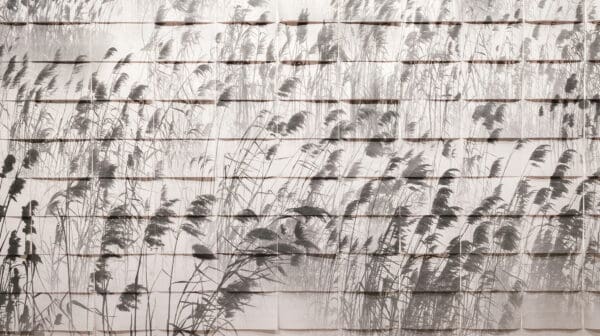
Poetics of Relation
Tender Comrade, currently on show at Sydney’s White Rabbit Gallery, creates a new vocabulary of queer kinship by reimagining the relationship between artworks, bodies and space.
I recently met someone who had just bought his first painting. He was still very excited by the purchase and wanted to show me an image of the work on his iPhone.
“Don’t laugh,” he said nervously as he swiped through selfies and pictures of his pets. “But please tell me if it’s crap!”
The work was a large painting by a very well-known Australian artist. The dealer had apparently shown him through the entirety of the gallery stockroom and, in the end, the man did the brave thing and bought an abstract picture that’d no doubt take quite a bit of explaining to his friends.
“What do you think?” he asked.
I was honest. I said I thought it was great.
“The thing is,” he said, “I just don’t know what to buy next.”
He had turned up at an art world event at an art museum with his credit card ready to go and seemed genuinely disappointed when he found out that he couldn’t actually buy anything that was hanging on the gallery walls.
Maybe you should look at gallery websites, I helpfully suggested, as I was acutely aware of my role as a goodwill, roving ambassador for commercial galleries.
He seemed a bit confused by that suggestion. Sure, he could look at art online but what did he want to buy?
“Photography?” I asked.
He looked confused.
“Photography? Is that with people? I saw a lot of pictures with people in them.”
Sometimes, sure, with people, or maybe still lives or landscapes too.
“Hmmm, I don’t think I could live with that – pictures of people I don’t know.”
Suddenly the gods of the art world smiled and our conversation was interrupted and this skittish young man with the expensive suit took off into the crowd, no doubt terrified by this brand new thing called photography.
It’d be hard to imagine an art world without commercial art galleries. That is, actual physical galleries with exhibitions out front and a stockroom behind, along with a smiling and patient gallerist on duty to talk the cashed-up, would-be collector through the whole dizzying concept of buying art – and interesting, challenging art, at that. There but for the grace of god, etc.
Yet all signs seem to be pointing to the demise of the traditional commercial gallery model. There are plenty of pressures too. Real estate prices are now probably the biggest factor for the regular relocation and eventual closure of many mid-range galleries, especially for those who don’t own the buildings they’re in and who are situated in some of Australia’s fanciest addresses.
And when artist-run galleries are being flung out of the inner city into cold and distant orbits among the oort cloud of working-class suburbia, there is little hope for the once-rich synergy of emerging artists graduating to entry level and mid-range commercial dealers when they’re separated by several travel zones.
Pop-up galleries seemed like a thing there for a moment but they’ve been revealed for what they are: clever marketing gimmicks that appeal to lifestyle sections on news websites, a here-today-gone-tomorrow real estate space filler with sponsored glitzy openings no one in the real art world would ever dream of attending if it weren’t for all the free vodka.
As for buying art on the web, that too seemed like a good idea but when people are cautious about buying a pair of shoes online, how keen do you think someone is to spend $10k on a painting without looking at in real life?
Trying to imagine a plausible model for what the commercial gallery dealer of tomorrow will be like is as hard as coming up with a new reality TV show format (which, now I come to think of it…). Every alternative seems to be either a much smaller, more mobile bespoke offering with a single room and more intimate exhibitions, the gallerist more akin to a secondary market operation, or something gargantuan like an art fair, which are great for gawkers and passersby, and maybe some sales, but which tend to have all the soul and panache of a boat show.
For all the apparent difficulties of the collector-dealer-artist business model, there just doesn’t seem like a viable alternative, whatever the scale of the operation. Do artists really want to go it alone and sell their work solo, operating like a small business and doing all the grunt work that entails? Or would they prefer someone getting between them and the novice buyers and leaving them to live the art life?